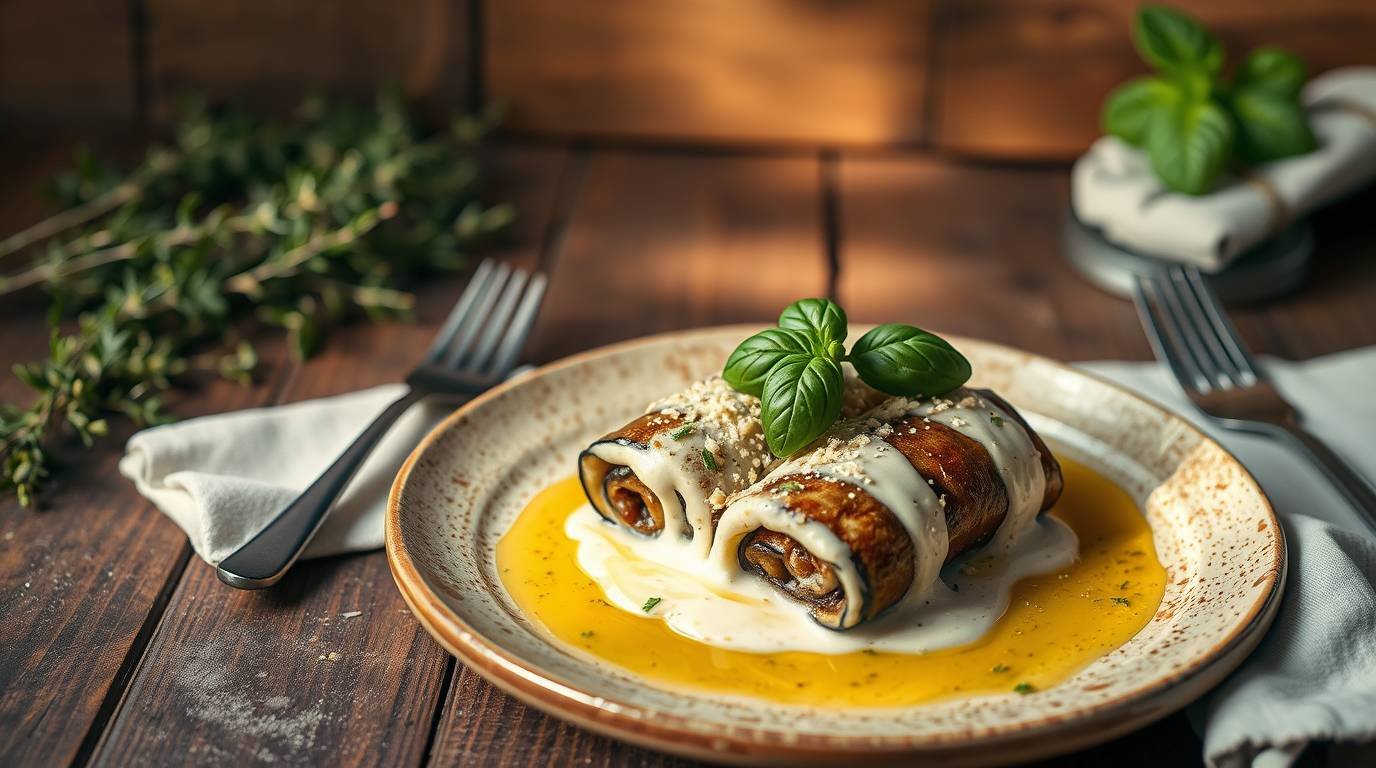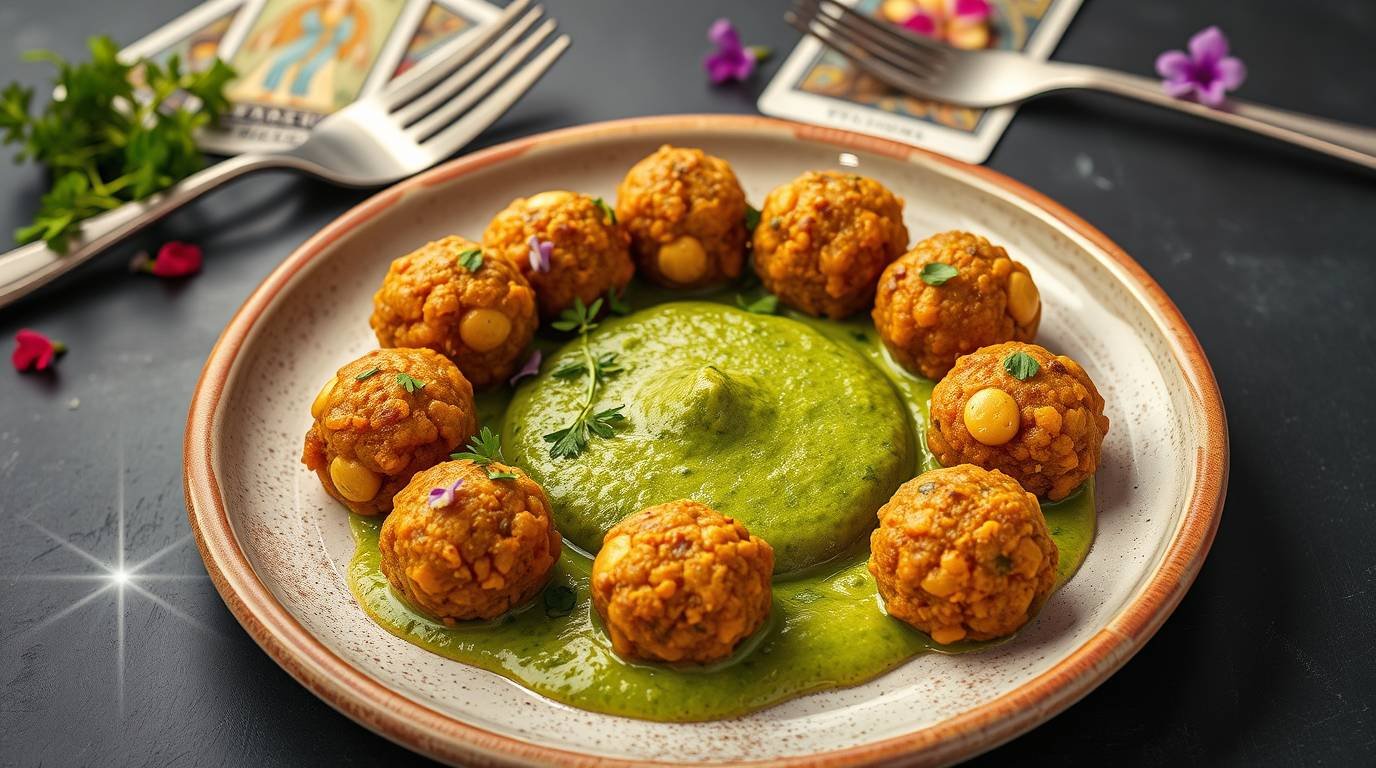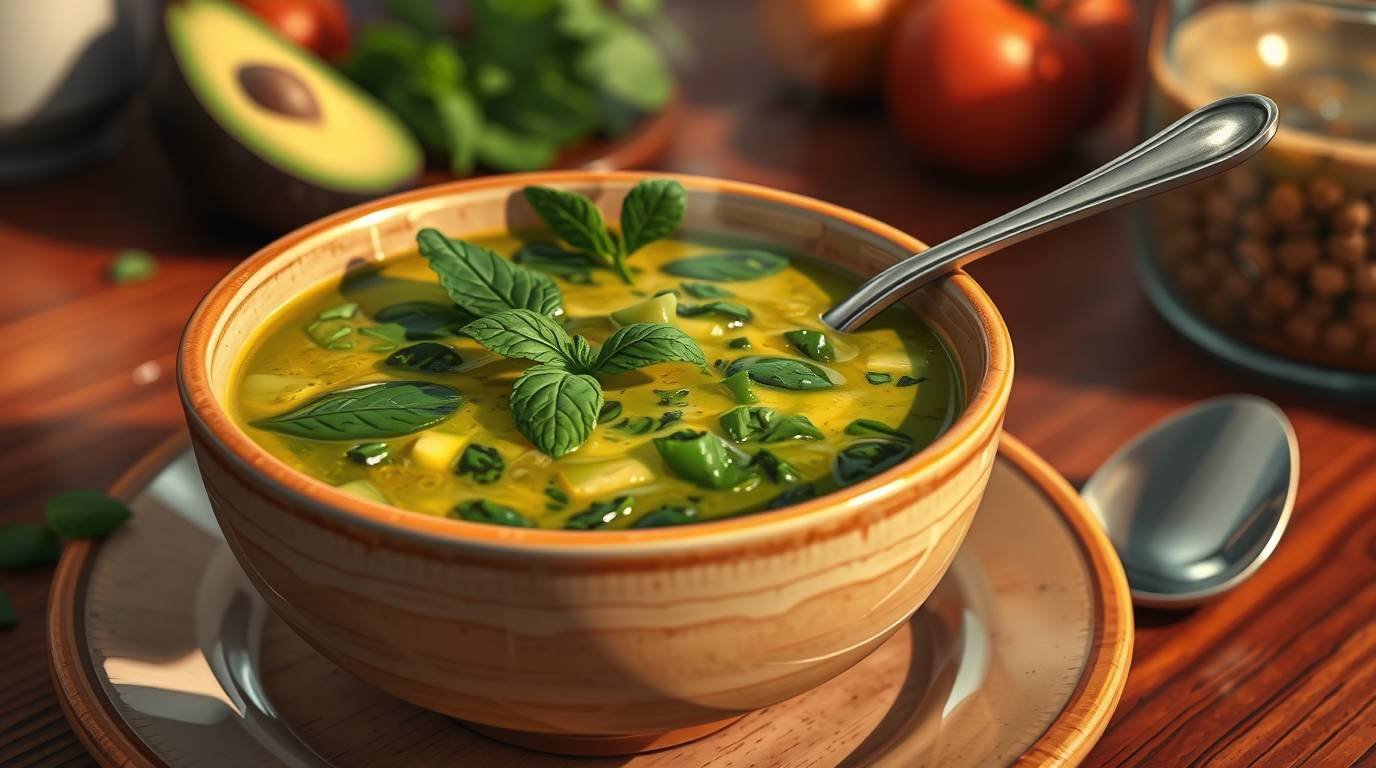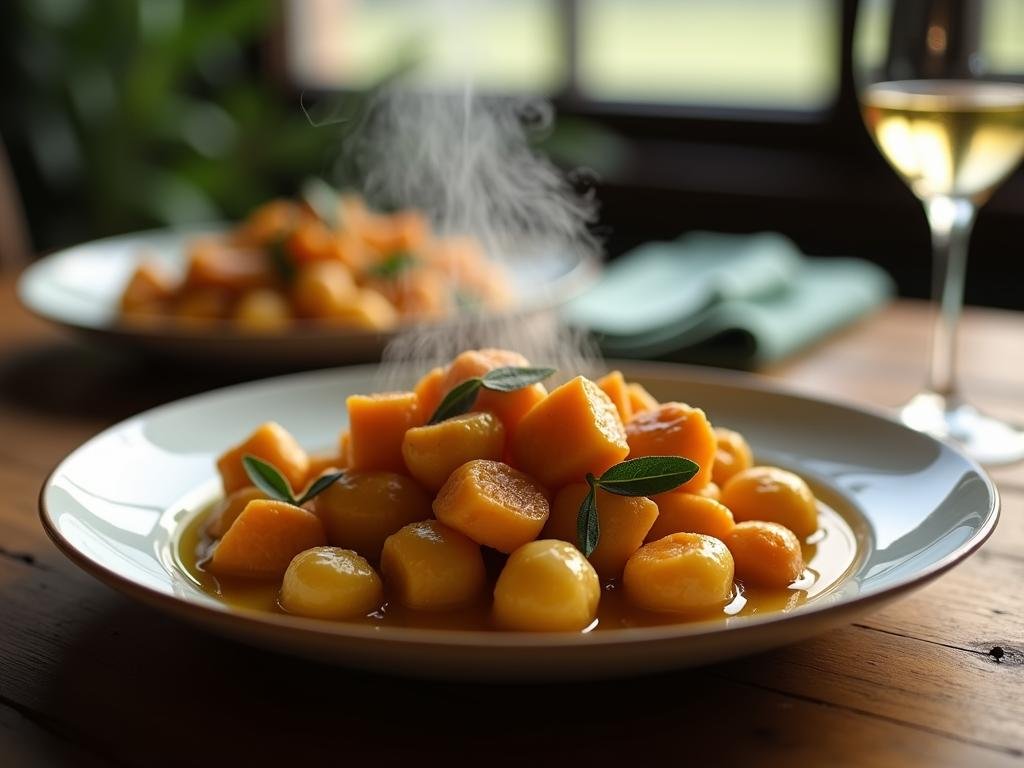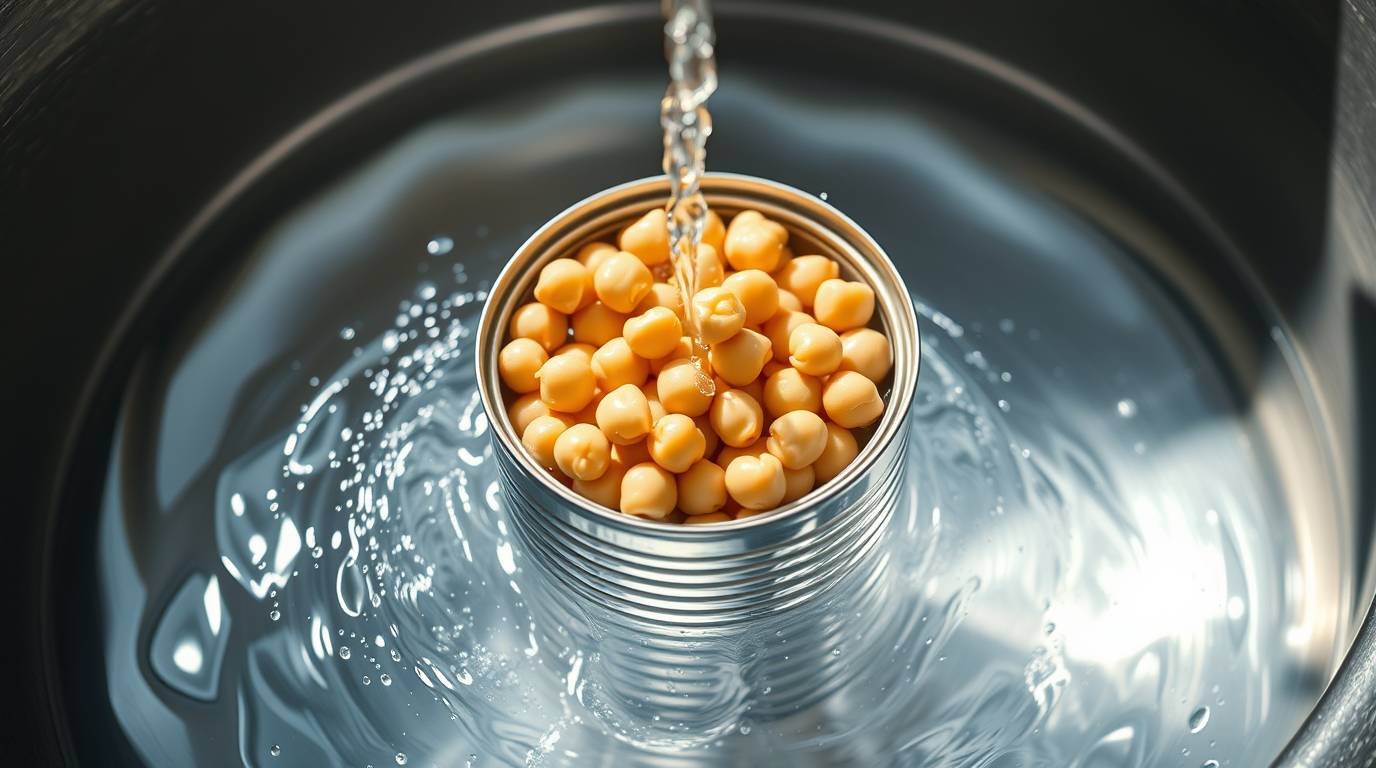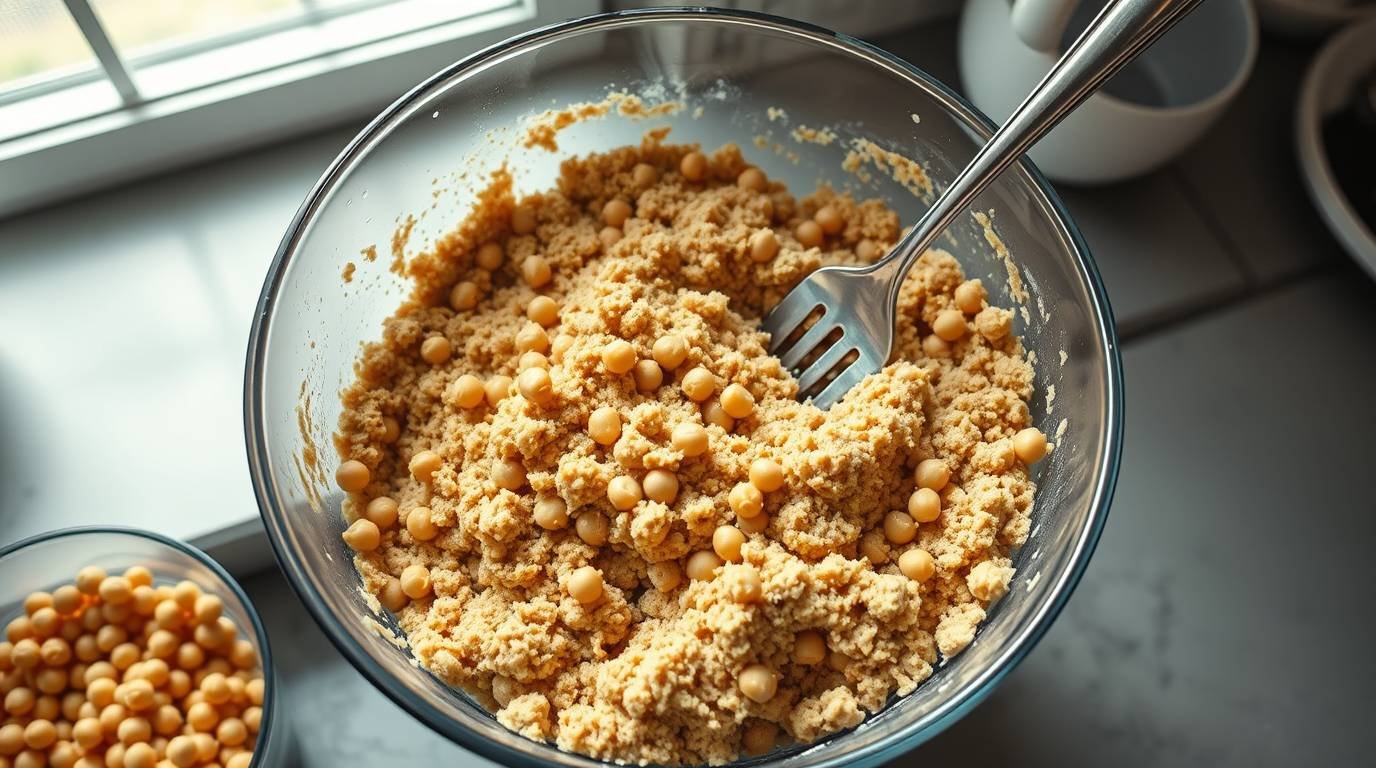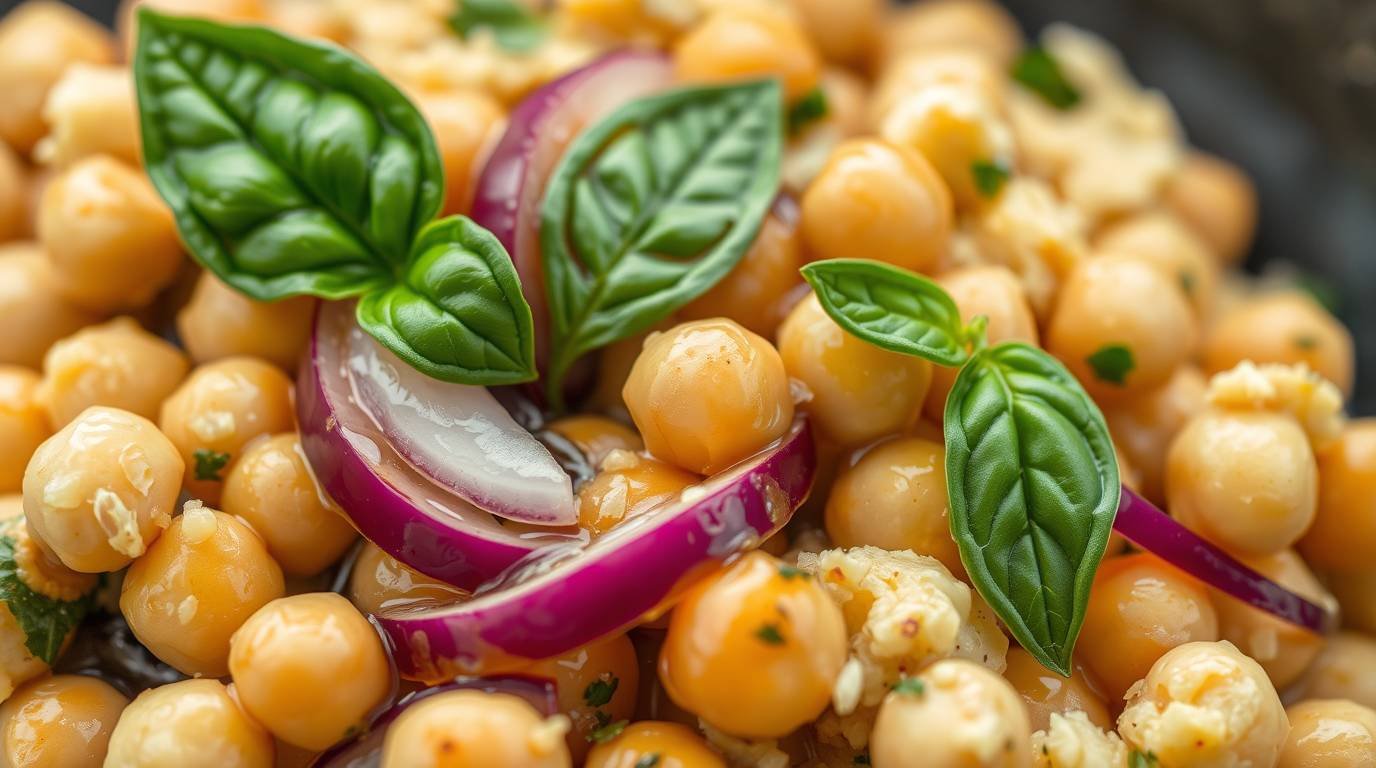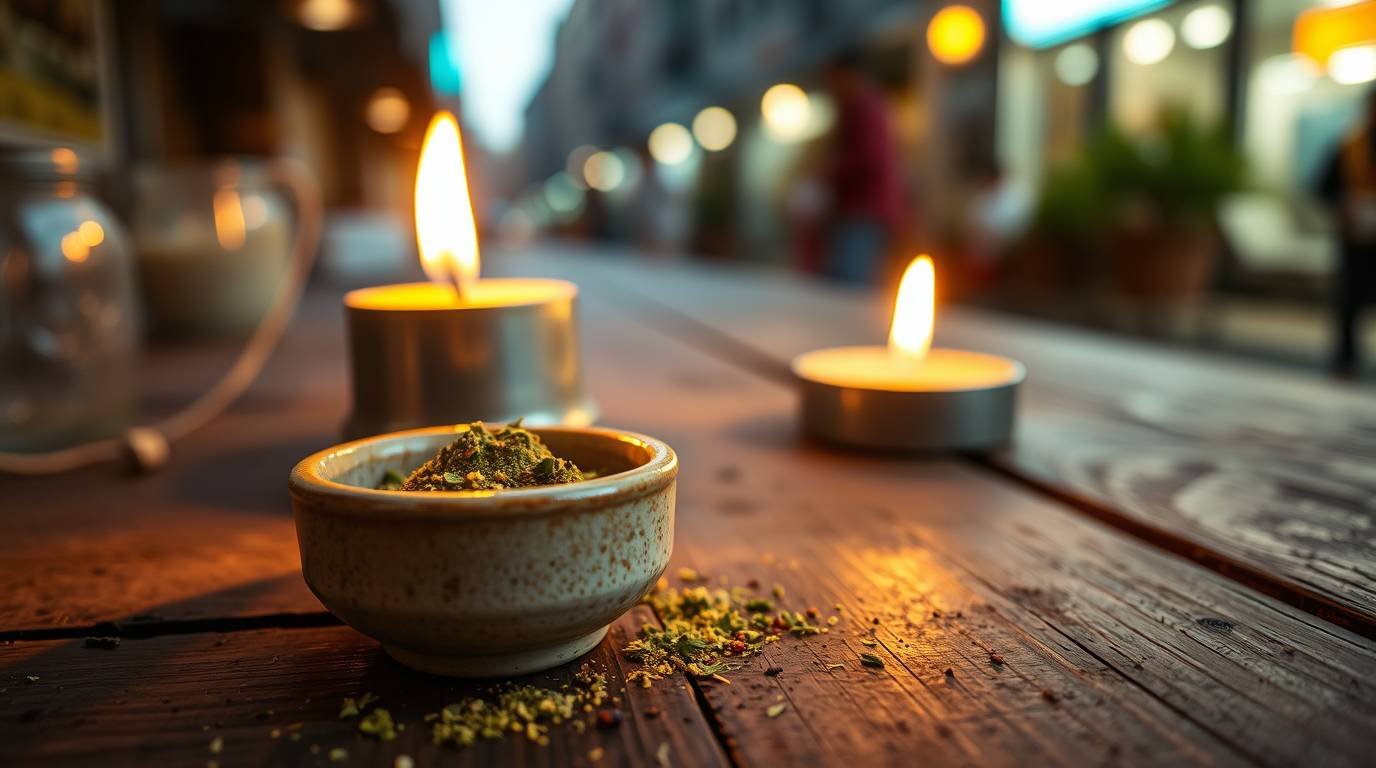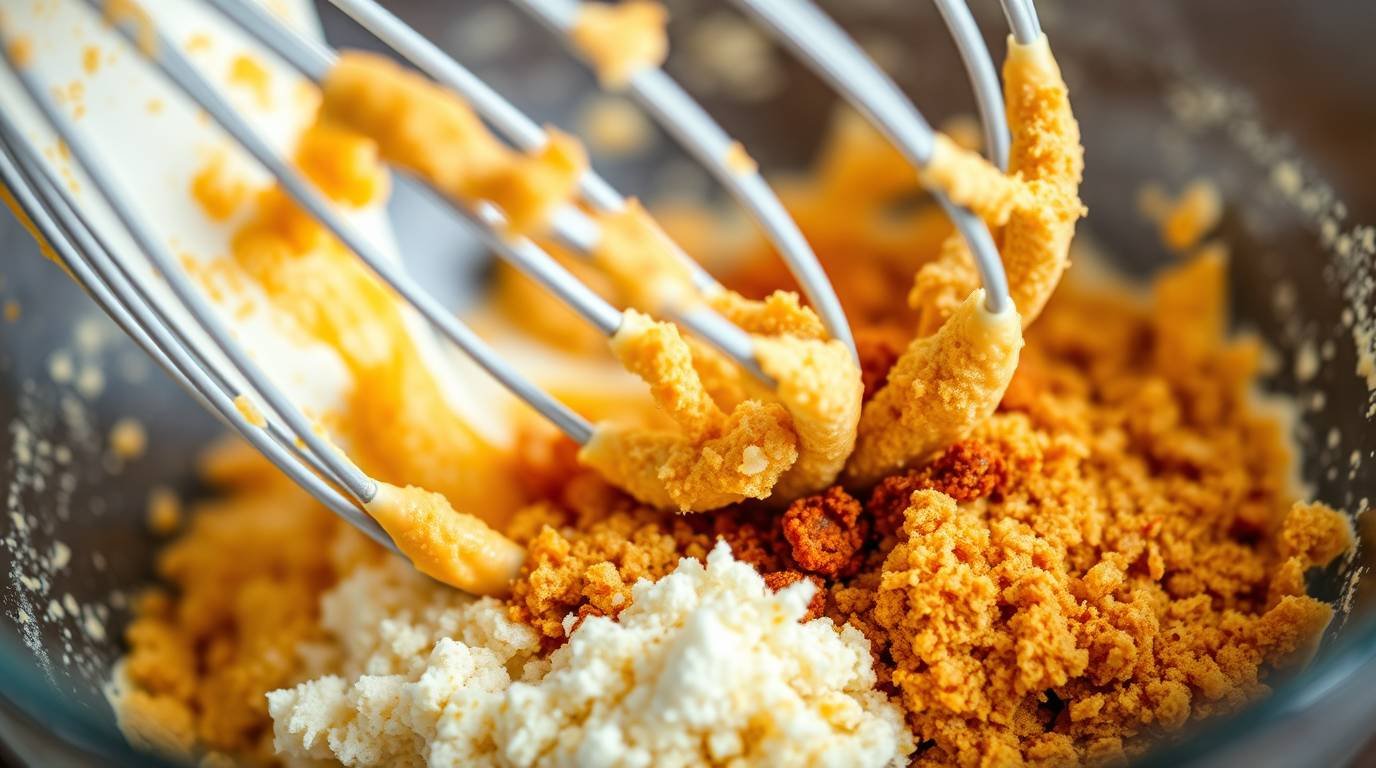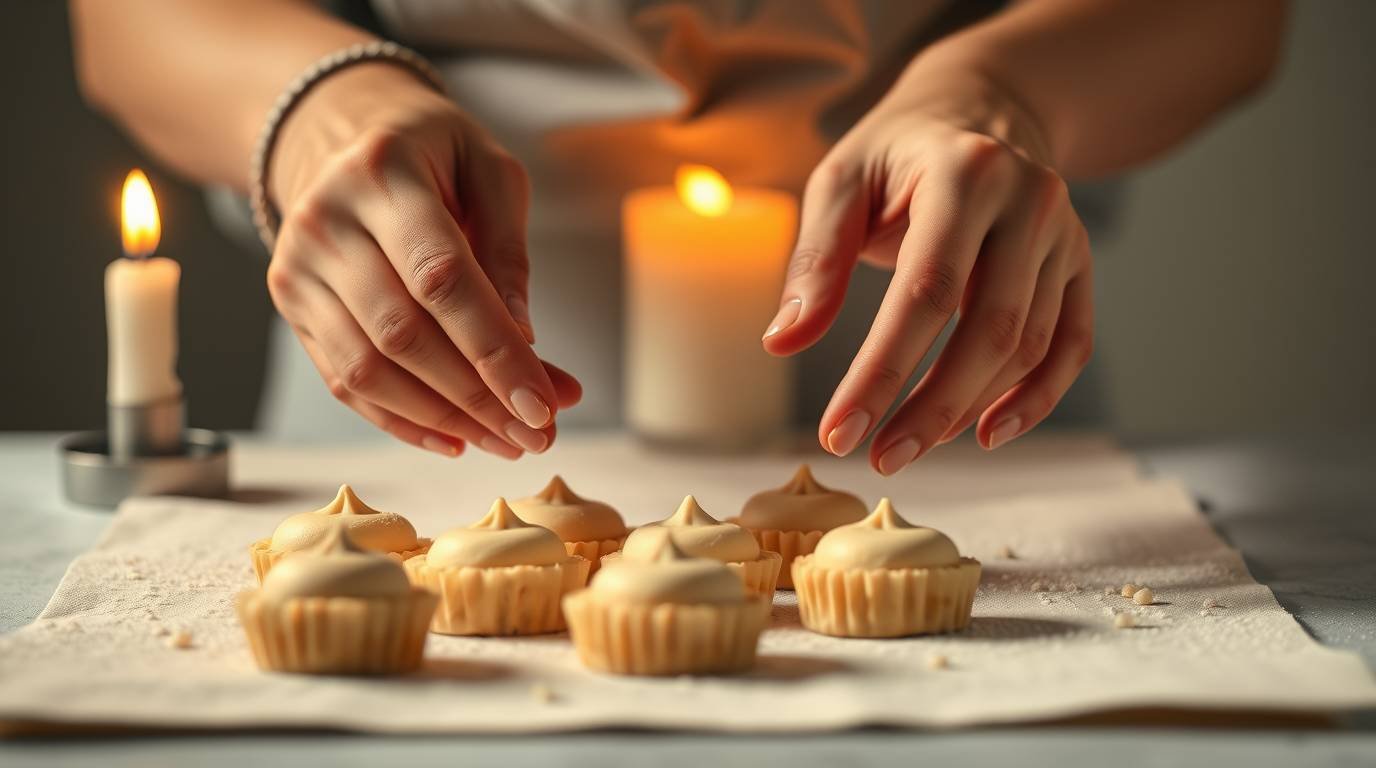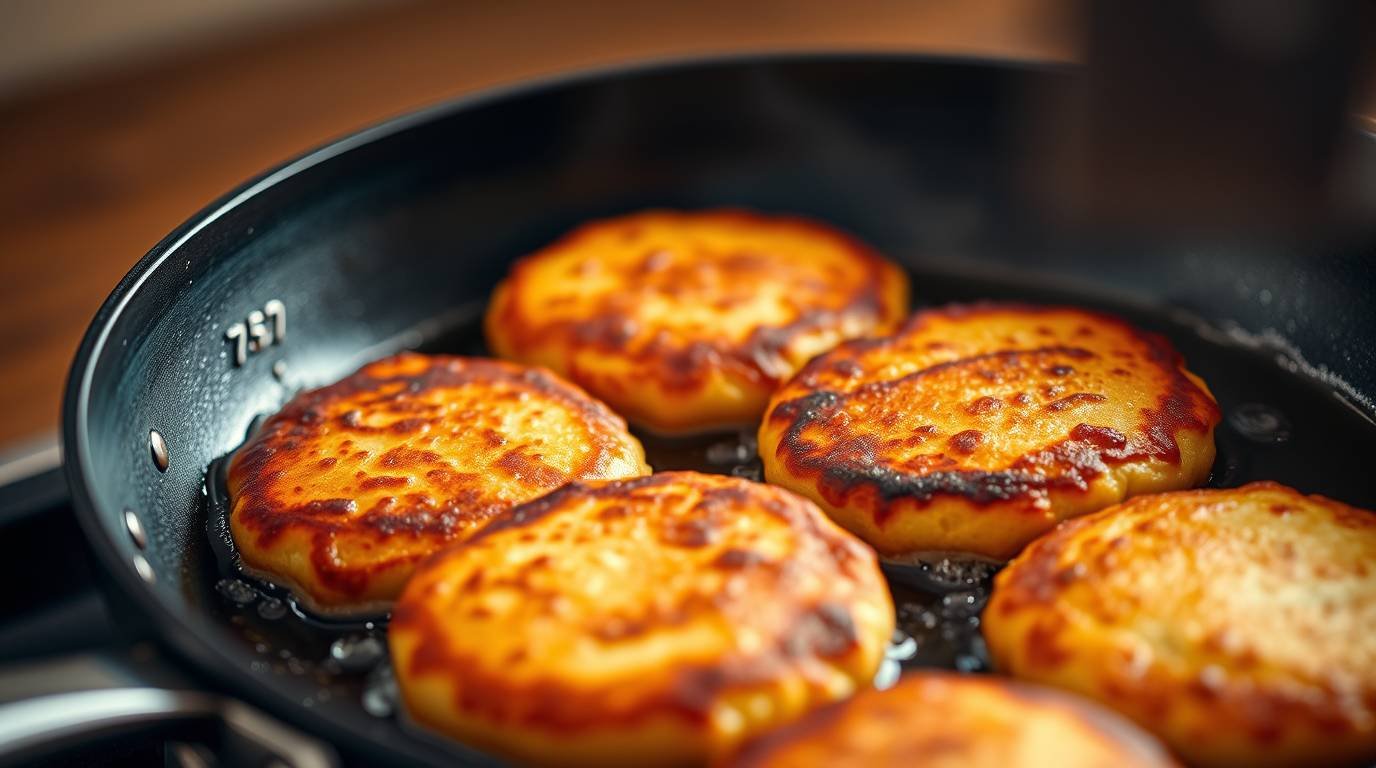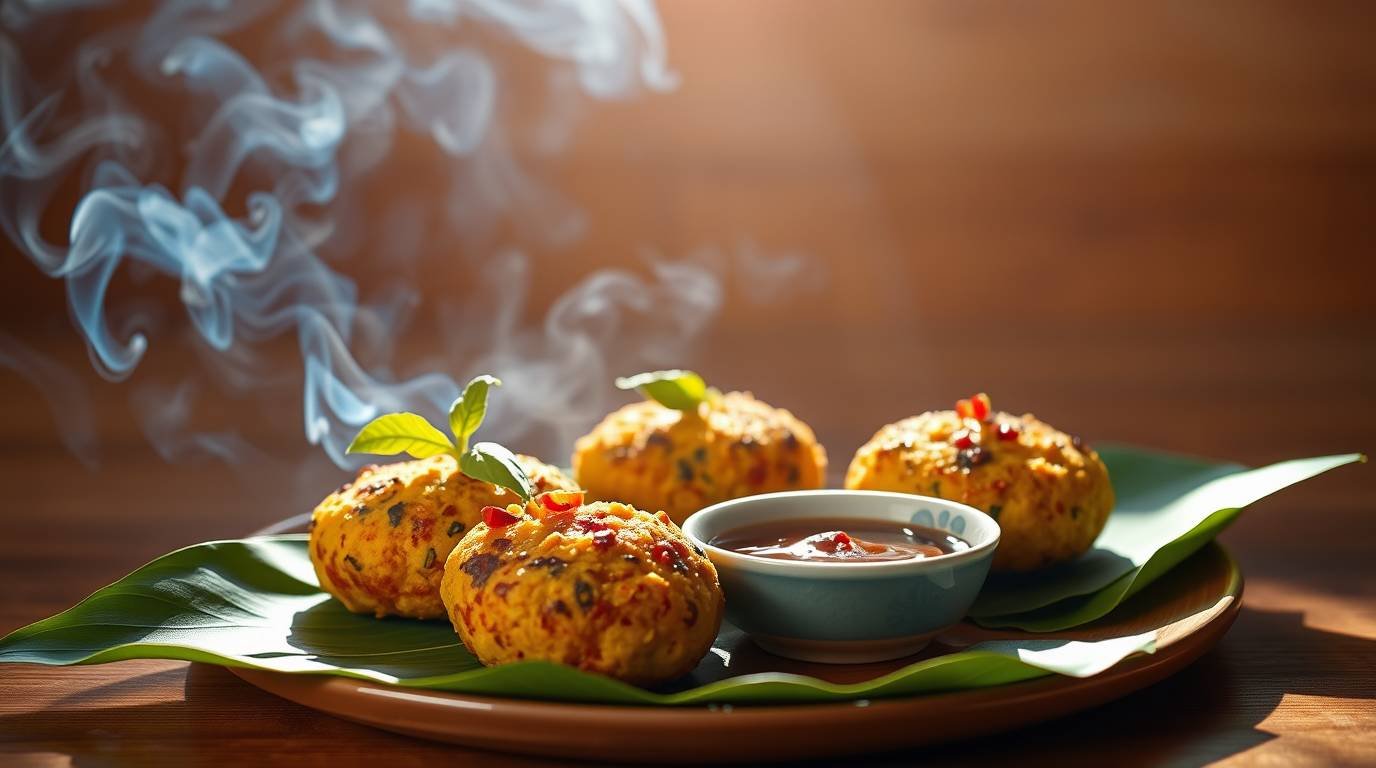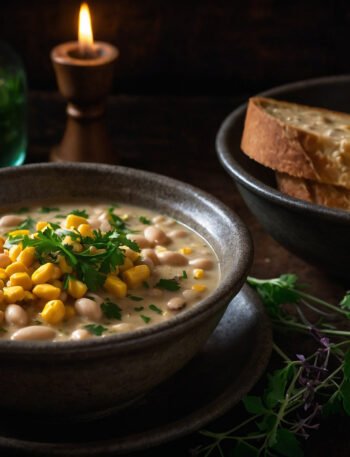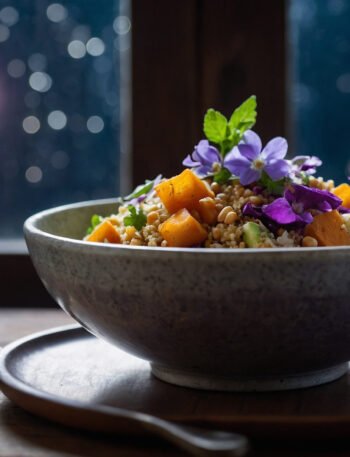Thai Basil Chickpea Cakes, The Bold Bloom
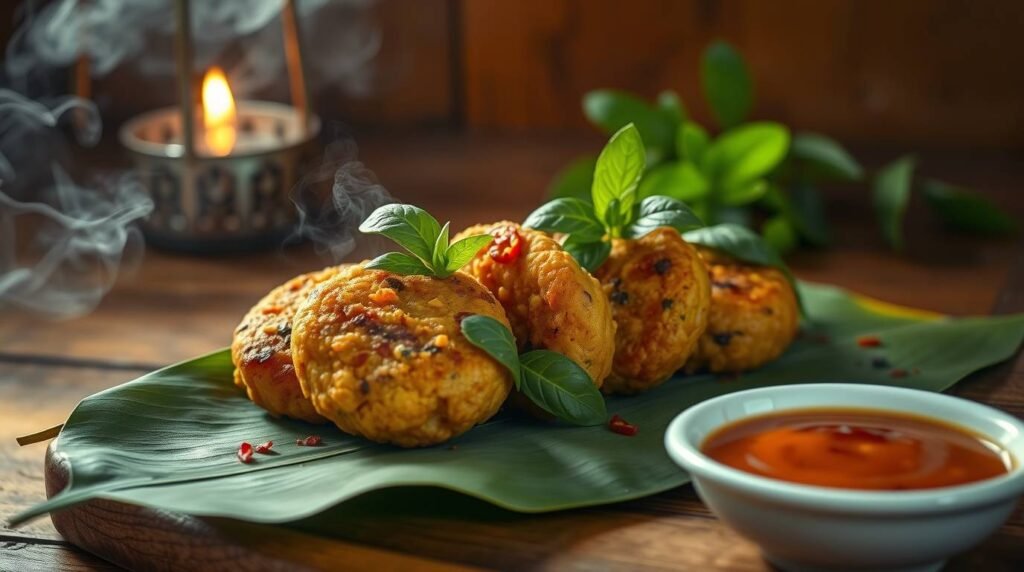

Thai Basil Chickpea Cakes are a vibrant and delicious fusion dish that combines the earthiness of chickpeas with the aromatic freshness of Thai basil, resulting in delectable cakes that are both satisfying and healthy. These cakes are not only a culinary delight but also a celebration of flavors that transport you to the bustling streets of Thailand, where food is a way of life and every bite tells a story.
🃏 Tarot Insights:
Main Archetype: The Empress (Nurturing Creation)
-
Thai Basil Chickpea Cakes symbolize abundance, fertility of flavor, and sensual joy. The Empress supports the bloom of creativity and nurtures us through bold yet balanced nourishment.
Related Recipes1 hr 30 mins Intermediate1 hr 30 mins Intermediate1 hr 30 mins Beginner1 hr 30 mins Intermediate1 hr 30 mins Intermediate1 hr 30 mins Intermediate1 hr 30 mins Beginner1 hr 30 mins Intermediate -
A secondary influence from The Strength card reminds us that boldness doesn’t need to overpower — inner resolve and gentle fierceness are key.
Supportive Minor Arcana:
-
Queen of Wands: Charismatic energy in the kitchen. This recipe shows confidence, heat (spices), and flair.
-
Three of Pentacles: Collaboration—perfect dish to share or co-create with others. A ritual of unity.
-
Page of Cups: Curiosity, emotional renewal, and the joy of trying something different in a sacred space.
🌈 Chakra Insights:
Solar Plexus Chakra (Manipura) – The Will to Shine
-
Chickpeas bring earthy grounding, while Thai basil and chili activate your personal power and digestive fire.
-
This dish helps awaken self-worth and clarity of purpose. You’re invited to feel bold without aggression, clear in intention.
Heart Chakra (Anahata) – The Flavor of Love
-
Thai basil vibrates in the heart field — balancing passion with grace.
-
Eating this dish mindfully can open the heart to joy, connection, and appreciation for life’s small sensual gifts.
✨ Magickal Insights:
-
Ingredient Spellwork:
-
Chickpeas: Stability, protection, grounding energy.
-
Thai Basil: Love, clarity, emotional harmony.
-
Chili: Courage, speed, purification.
-
Lime: Mental clarity, freshness, energetic cleansing.
-
-
Haiku Spell (for Bold Blooming):
-
css
In basil’s green breath,
My voice blooms with sacred heat—
I rise, whole and strong.
-
Ritual Serving Suggestion:
Serve on a natural element (wood, leaf, stone) and light incense nearby. Before the first bite, whisper:
“Let my strength be kind and my bloom be bold.”
Eat slowly and chew with the intention of awakening courage and clarity.
The Essence of Thai Cuisine
Thai cuisine is a captivating tapestry woven from diverse cultural influences, geographical bounty, and a deep-seated love for food that tantalizes the taste buds. Each dish embodies a balance of flavors—sweet, sour, salty, and spicy—creating a harmonious experience that is as much about taste as it is about the vibrant colors and aromas that fill the air. Among the many ingredients that define this cuisine, Thai basil stands out with its unique flavor profile. The slightly peppery, sweet notes of Thai basil are a hallmark of many traditional dishes, making it an essential herb that brings dishes to life.
A Journey through Thai Basil’s Roots
Thai basil, or “bai horapha,” is a variety of basil native to Southeast Asia. Unlike its Italian counterpart, Thai basil has a distinctive flavor that is both spicy and aromatic, with hints of anise and clove. It thrives in the warm climates of Thailand, often found in bustling markets where vendors sell fresh herbs and produce. The herb has been used in Thai cooking for centuries, contributing not just to the taste but also to the cultural identity of the cuisine. It is often featured in stir-fries, soups, and curries, making it a versatile staple in any Thai kitchen.
Chickpeas: The Unsung Hero
Chickpeas, also known as garbanzo beans, are another star ingredient in our Thai Basil Chickpea Cakes. These little legumes have a rich history that dates back thousands of years, originating in the Middle East and spreading across the globe. Nutritionally, chickpeas are a powerhouse, packed with protein, fiber, and essential vitamins and minerals. Their creamy texture and nutty flavor make them the perfect base for creating hearty cakes that are both satisfying and nutritious.
Bridging Cultures with Flavor
The combination of Thai basil and chickpeas in this recipe is a beautiful example of culinary fusion—melding the traditional flavors of Thai cooking with the wholesome goodness of legumes. The cakes are not just a nod to Thai cuisine but also reflect modern dietary trends, catering to those seeking plant-based options without sacrificing flavor. The lightness of the cakes, paired with a crispy exterior, creates a delightful contrast that makes each bite a celebration of texture and taste.
Cooking Techniques and Flavor Building
When it comes to preparing Thai Basil Chickpea Cakes, the cooking techniques used play a pivotal role in enhancing the flavors and textures. The process begins with the chickpeas, which can be either canned or cooked from dried, but for optimal flavor, I recommend using dried chickpeas soaked overnight and cooked until tender. This method allows you to control the texture, ensuring they are just right for mashing.
As you prepare the cakes, toasting spices like cumin and coriander will elevate the overall flavor profile, creating a depth that resonates with each bite. The addition of finely chopped red onion and garlic not only introduces a savory foundation but also brings a beautiful aromatic quality to the mix. Incorporating a splash of lime juice adds a zesty brightness, balancing the richness of the chickpeas and the herbal notes of the Thai basil.
In conclusion, these Thai Basil Chickpea Cakes are more than just a meal; they are an experience—a journey through vibrant flavors and a celebration of culinary creativity. Whether you’re enjoying them as a nutritious snack, a hearty main dish, or even a party appetizer, they embody the essence of what food should be: delightful, nourishing, and a little bit adventurous.
Thai Basil Chickpea Cakes, The Bold Bloom
Description
These Thai Basil Chickpea Cakes are a savory delight, combining nutty chickpeas with aromatic Thai basil, making them a delicious and nutritious option for any meal.
Ingredients
Instructions
-
Preparing the Chickpeas
- Rinse and Drain
Start by rinsing a can of chickpeas under cold water. This helps remove excess sodium and any canning liquid that might affect the flavor.
If you're using dried chickpeas, soak them overnight and cook until tender before proceeding.
-
- Mash the Chickpeas
In a large mixing bowl, use a fork or potato masher to mash the chickpeas coarsely. You want a blend of whole and slightly broken chickpeas for texture.
Don't over-mash; you want some chunks to give the cakes a nice bite.
-
Flavoring the Mixture
- Add Aromatics
Chop a handful of fresh Thai basil and mix it into the mashed chickpeas. Add minced garlic, finely diced red onion, and a splash of soy sauce for added umami.
Feel free to adjust the amount of basil based on your love for it—more basil equals more flavor!
-
- Spice It Up
Add a teaspoon of ground coriander and a pinch of chili flakes to the mixture. This will elevate the flavor profile and add a subtle kick.
Toasting the spices in a dry pan for a minute before adding them can enhance their aroma and depth of flavor.
-
Binding the Mixture
- Incorporate the Binder
Add a beaten egg (or a flax egg for a vegan option) to the mixture along with a handful of breadcrumbs. This will help bind everything together.
If your mixture feels too wet, add more breadcrumbs, one tablespoon at a time, until it holds together.
-
Shaping and Cooking the Cakes
- From the Cakes
Using your hands, shape the mixture into small cakes, about the size of your palm. Press them slightly to ensure they hold their shape.
The cakes can be made ahead of time and stored in the refrigerator for up to an hour before cooking, which helps them firm up.
-
- Cook the Cakes
Heat a non-stick skillet over medium heat and add a drizzle of oil. Once hot, place the cakes in the skillet, being careful not to overcrowd them. Cook for 4-5 minutes on each side until golden brown.
Don't flip them too soon; let them develop a crust first—it's the secret to crispy perfection!
-
Serving Suggestions
- Prepare to Serve
Once cooked, transfer the cakes to a paper towel-lined plate to absorb any excess oil. Serve warm with a zesty dipping sauce or atop a fresh salad.
A squeeze of lime and a sprinkle of sesame seeds on top add a lovely finishing touch!
Nutrition Facts
Serving Size 4
- Amount Per Serving
- Calories 1182.48kcal
- % Daily Value *
- Total Fat 48.24g75%
- Saturated Fat 8.91g45%
- Cholesterol 186mg62%
- Sodium 4508.37mg188%
- Potassium 1827.86mg53%
- Total Carbohydrate 163.13g55%
- Dietary Fiber 43.76g176%
- Sugars 18.85g
- Protein 50.41g101%
- Vitamin A 2989.06 IU
- Vitamin C 27.29 mg
- Calcium 620.41 mg
- Iron 22.21 mg
- Vitamin D 3.67 mcg
- Vitamin E 4.13 mg
- Vitamin K 159.05 mcg
- Thiamin 2.2 mg
- Riboflavin 2.31 mg
- Niacin 15.4 mg
- Vitamin B6 10.08 mg
- Folate 1052.27 mcg
- Vitamin B12 12.29 mcg
- Pantothenic Acid 3.46 mg
- Phosphorus 1370.94 mg
- Magnesium 421.88 mg
- Zinc 12.92 mg
- Selenium 46.1 mcg
- Copper 1.74 mg
- Manganese 9.6 mg
* Percent Daily Values are based on a 2,000 calorie diet. Your daily value may be higher or lower depending on your calorie needs.
Note
- Use fresh Thai basil for a vibrant flavor; dried basil will not provide the same aroma and taste.
- Rinse and drain canned chickpeas thoroughly to remove excess sodium and improve texture.
- For added depth, toast spices (cumin, coriander) in a dry skillet before mixing them into the batter.
- Adjust the heat level by adding minced chili or a splash of sriracha to the mixture.
- For a gluten-free option, substitute breadcrumbs with crushed gluten-free crackers or ground oats.
- Ensure the mixture is not too wet; if it is, add more breadcrumbs or chickpea flour until it holds together.
- Pan-fry the cakes in oil over medium heat for a golden crust; avoid overcrowding the pan to maintain even cooking.
- Serve with a tangy dipping sauce made from yogurt, lime juice, and a touch of honey for a delightful contrast to the savory cakes.
- Store leftovers in an airtight container in the fridge for up to 3 days; reheat in a skillet for best results.
- These cakes also freeze well; place them in a single layer on a baking sheet, freeze until firm, then transfer to a freezer bag for up to 3 months.
Bringing It All Together
The Essence of Thai Basil Chickpea Cakes
These Thai Basil Chickpea Cakes are not just a meal; they are an experience that dances on your palate. The vibrant flavors of fresh basil, zesty lime, and a hint of spice come together in a symphony that celebrates the best of Thai cuisine. Each bite is a delightful revelation, with the crunch of the outer layer giving way to a tender, herb-infused center. It’s a dish that evokes memories of bustling markets in Thailand, where the air is thick with the scent of fresh herbs and sizzling street food.
Serving Suggestions and Variations
When it comes to serving, think outside the box! Pair these cakes with a tangy dipping sauce made from soy sauce, lime juice, and a sprinkle of sesame seeds for an explosion of flavor. They shine as a starter, but don’t shy away from making them the star of your main course alongside a refreshing cucumber salad. If you’re feeling adventurous, try adding a bit of grated carrot or diced bell peppers into the batter for added crunch and color. Leftovers? They hold up beautifully in the fridge for a couple of days and can easily be reheated in the oven to bring back that delightful crispiness.
Join the Cooking Community
I invite you to dive into this recipe and make it your own. Whether you stick to the classic version or add your personal twist, I would love to hear about your culinary adventures. Please share your experiences or any questions you might have in the comments below. Let’s create a vibrant community of food lovers who celebrate the joy of cooking together. Happy cooking, and may your kitchen be filled with the fragrant aromas of Thai herbs!
Tag tarot_mistical_lab/ if you made this recipe.
Frequently Asked Questions
Q: How can I store the leftovers?
A: Leftovers can be stored in an airtight container in the fridge for up to 4 days. Reheat in a skillet to maintain crispness.
Q: Can I substitute an ingredient?
A: Absolutely! You can swap chickpeas with black beans or lentils for a different flavor profile. Just ensure they are well mashed.
Q: What should I serve this with?
A: These cakes pair beautifully with a tangy yogurt sauce or a fresh green salad. You can also enjoy them in a bun as a burger!
Q: Can I make these cakes in advance?
A: Yes, you can prepare the mixture a day ahead and refrigerate it. Just form the cakes and cook them when you're ready to serve.
Q: Are these cakes gluten-free?
A: Yes, they are naturally gluten-free! Just double-check your breadcrumbs or use ground oats as an alternative.
Hello, beautiful people! I am Marco DeLuca, Mystic Chef.
Master Chef • Tarot Grandmaster • Rune Caster
Crafting recipes that blend magick, flavor, and soul.
You may also like...


Sweet Potato Quinoa Bowl: Rooted in Radiance, A Comforting Ritual for Body and Spirit
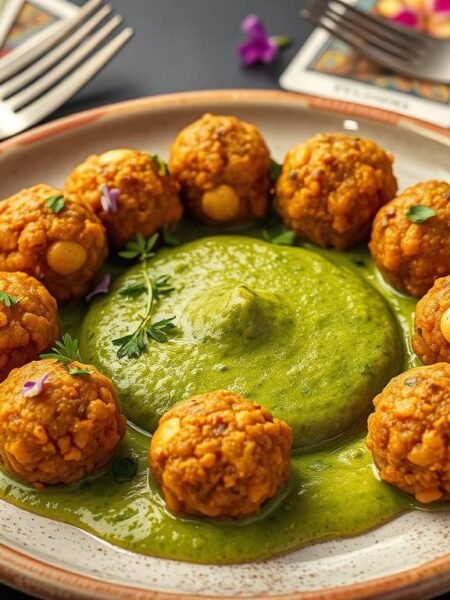

Earthbound Kofta with Golden Lentils and Sacred Herbs




